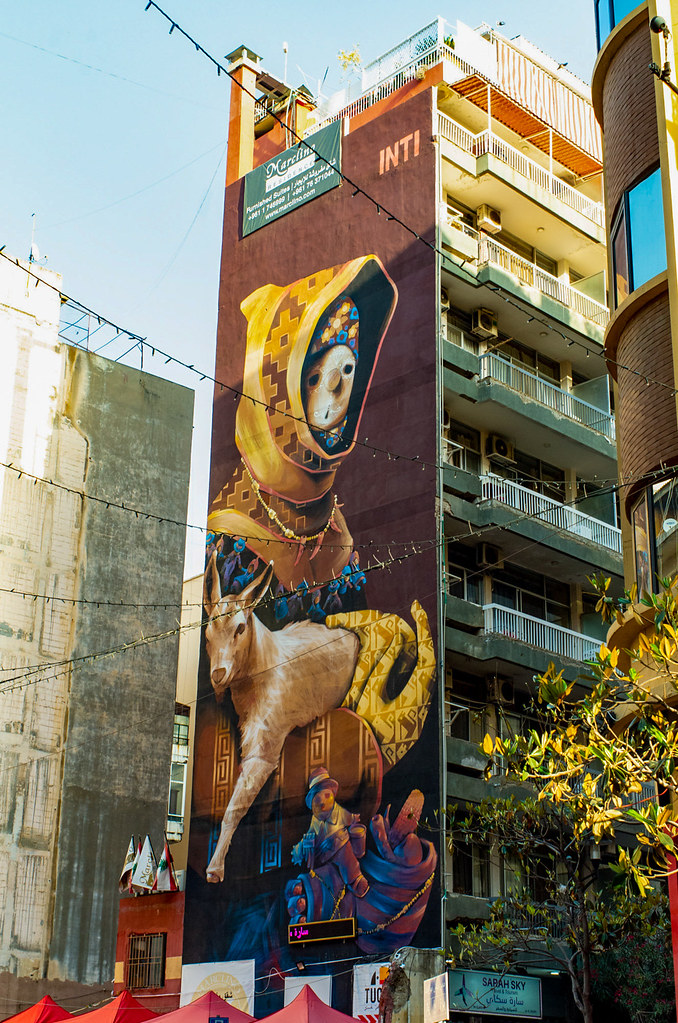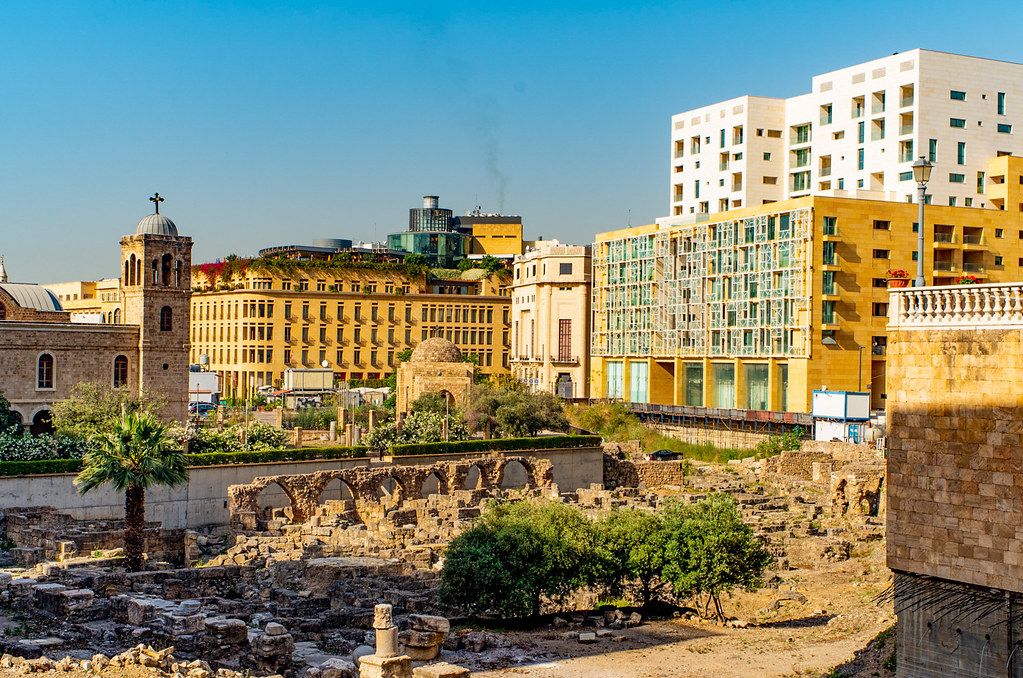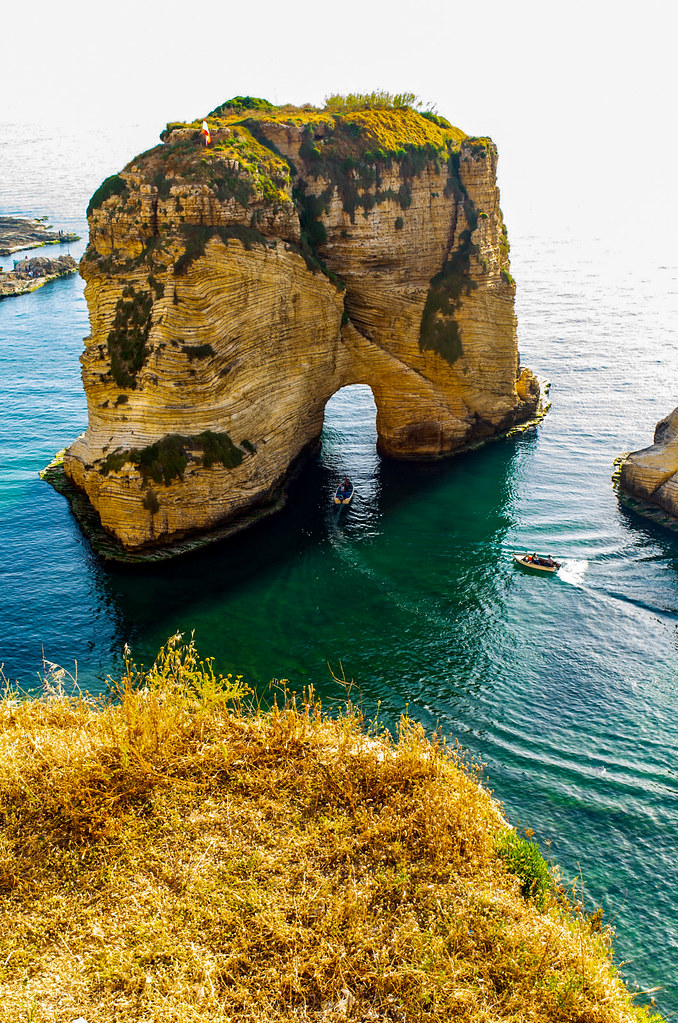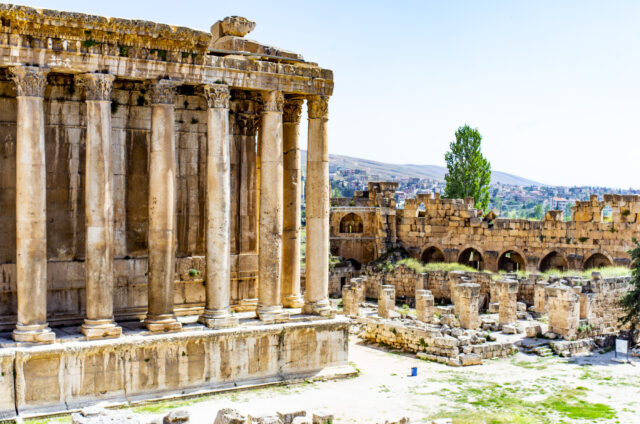Arrival to Lebanon
Beirut has had a long history of ups and downs. It used to the gateway to Middle East and to Asia in general for the Europeans. It was also called Paris of the Middle East. Modern Beirut battered with the wars and hardships, still retains its charm and multicultural vibes. While not many tourists visit it nowadays due to security concerns, it is absolutely a gem.
As soon as you step foot in Lebanon, you feel that this is the country of contrasts, where you find Uber drivers with socialist ideas and the ones, who care about nothing else but honking, whenever they see a girl they consider, well, attractive? Sexy? Who knows what goes on in their heads.
As we got out of the airport, we were accosted by the taxi drivers offering a ride. We were glad that we had pre-ordered a taxi (see the details in the post on transport in Lebanon). The drive to Central Beirut was strange. The area between the airport and Beirut city center is considered dangerous, so the only safe road linking south of Lebanon to Beirut is the main highway covered with tall walls and barbed wires. The drive to Hamra, where we stayed, is just 15-20 minutes. As you get into the city center, you drive by Raouche area, which is a rich area, where apartments cost millions of dollars. The area looks modern and well maintained. Next was Hamra, most popular with tourists, as there are a huge number of hotels and food places, as well as shops. So, unless you have a lot of money to stay in Raouche area or in Downtown, your best bet is Hamra.
We stayed at the hotel in Hamra for the entire duration of our visit and were doing day trips from here, while having evenings in Beirut. We spent two full days exploring the city on our first and last day.
Day 1 Highlights: National Museum of Beirut, Beit Beirut, Gemayazeh and Armenia Areas
You can start exploring the city with visiting the National Museum of Beirut, where you find a lot of information about the Lebanese history. This would be a good start of your trip, as the museum provides a good start in learning the history of the country with 100s of artifacts starting from prehistorical period.
From the museum you can walk towards the older parts of the city. A thing that jumps out, while walking in the city, is that women are dressed all sorts of ways, you find many with short shorts and some – fully covered. Another example of the contrasts in this city and country.
Check out Beit Beirut – one of the many buildings in the city with the scars from civil war. It is currently a museum and a cultural center and it’s free to enter.
Similar to this building, all around the city you see a number of buildings damaged during the civil war. The city still keeps the wounds of 15-year hostilities visible – so many buildings in Central Beirut still stand the way they were. We were told, these buildings are kept the way they were left after the war, as a reminder.

Next, head to Gemayazeh area. See the Villa Tueni-Bustros. You can also go to Sursock museum (Sursock palace is private and you can only peek at it from outside). I think this museum is worth a visit if not for the art, definitely for the architecture and interior, plus it’s free. After that head down the Saint Nicolas Stairs, this is a cute and picturesque area.
Walking around this area you will find a number of old villas, some of which are event venues, others are closed off, but you can still admire their exterior. You will also find a number of cafes and restaurants around here. So I do suggest to just get lost in the streets and explore.

After Gemayazeh, you can head the Armenia and Bourj Hammoud – this is the district spread around the main street called Armenia and continued by Bourj Hammoud. The main attraction of this area is its diversity. You will find churches and mosques here. As the name tells you, many Armenians still reside here.
After the day of exploration, spend the evening in the Hamra area.
Day 2 highlights: Downtown Area, Souq, Nijmeh Square, Zaitunay Bay, Corniche, and Raouche (the seaside area)
Start your day in the Downtown Beirut. Visit Mohammad Al-Amin Mosque. It is a new building opened in 2008 and located on the spot, where prayer corner existed from the 19th century. Women can’t visit with just a scarf, you need to put a huge thing on you (they provide this), so you decide if it’s worth it for you 😊 I may have done it for a historically important location, but in that heat I wasn’t up for doing it here.
The mosque is actually located near the Martyr’s square, which is dedicated to the people, who were executed during the Ottoman rule in 1916. This area is often the location for the demonstrations.
Continue on to Nijmeh Square (or Place de l’Étoile), where Lebanese Parliament is located. At the center of the square you will find a Clock tower. This area overall looks very European – clearly an influence from the times of French mandate in the first half of the 20th century.
Here you will also find the conglomerate of different cultures and religions, including mosques and churches. Saint George Greek Orthodox Cathedral is the site where 6 different churches were locate throughout almost 2000 years. Current byzantine style structure dates back to the 18th century. besides, you can visit the older church area, which was uncovered during the bombings during the end of the 20th century (it’s weird that some horrid things bring a bit of good).

Among the Government buildings you will also find Al-Omari Grand Mosque. This building built in the 12th century was originally a church and then converted into a mosque. The minaret was added at a later date. It’s shape still does look like a church.
In this area you will find a number of cafes. This is nice area to sit and relax. However, it also somehow feels strange. One thing that you will notice is the presence of many soldiers in the downtown area. Some roads were closed, and you had to walk around them. Plus, the buildings look abandoned, as the population was driven out of this area due to economic depression.
Then visit the Beirut Souk. This doesn’t look like the old bazaars at all, as the name souk may suggest. It’s more like a modern shopping area completed by the sign “I love Beirut”. Also walk around the Roman baths area.

In the afternoon, start walking around the city. Head to the Zaitunay bay. This is a marina area, where a lot of people like to hang out any time of the day and night. It has a number of restaurants and coffee shops.
 Old Holiday Inn near Zaitunay bay. This newly opened hotel became the site of hostilities for months in 1975-76. It now is left, as it was during civil war, with bullet holes in it. It is considered a military zone, so it’s surrounded by barbed wires and is guarded by soldiers. This was rather surprising, as it’s an abandoned building. It looks very gloomy and serene. Read more details about the history here.
Old Holiday Inn near Zaitunay bay. This newly opened hotel became the site of hostilities for months in 1975-76. It now is left, as it was during civil war, with bullet holes in it. It is considered a military zone, so it’s surrounded by barbed wires and is guarded by soldiers. This was rather surprising, as it’s an abandoned building. It looks very gloomy and serene. Read more details about the history here.
After this, head to the Corniche and relax walking on this long promenade. If the weather is good, you will find a huge number of people of all ages, locals and tourists, in all sorts of attire. We actually walked the whole length up to the Raouche area and it took us a couple of hours.
Head to the Raouche and see this symbol of Beirut also referred to as Pigeons’ Rock. It was formed after an earthquake in 13th century. It looks nice any time of day, but you should come back here once to see the sunset.

Unfortunately, you find too much rubbish around the area and in the sea. I wouldn’t suggest eating at a restaurant nearby, as they are too expensive because of the views, but you can have coffee there. If you want to go closer, you have an option to take a fisherman’s boat from the harbor. As I heard it takes about half an hour. It goes through the rock and comes back. A boat costs about 20-25 USD.



